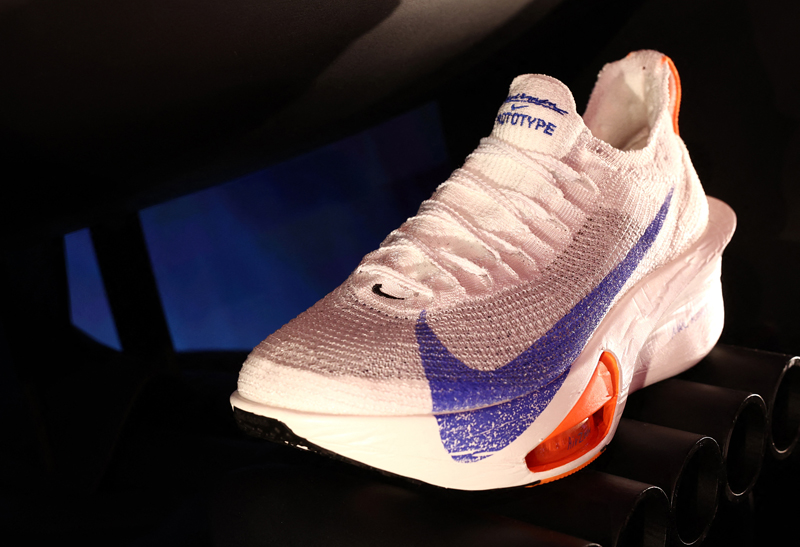Weight vests and ankle weights: can they enhance performance?
That question was addressed recently in research carried out at Texas Tech University. There, track and field athletes participated in a six-week study in which 13 athletes utilised traditional strength training while 14 athletes took part in regular strength training PLUS plyometric training with ankle weights and weight training vests. At the end of the six weeks, raw leg-muscle power was assessed using three tests - vertical leaping, the standing long jump, and 40-yard dash
The traditional strength training (carried out by all 27 athletes) consisted of bench presses, power cleans, half-squats, military presses, sit-ups, pull-ups, leg extensions, and leg curls, usually using five sets of five reps of each exercise at about 65 to 75 per cent of maximal effort. However, nearly maximum weights and lower numbers of reps were utilised on every fourth workout. Training was carried out three times per week
Fourteen athletes (the plyometric group) took part in plyometric training immediately after the regular, three-times-per-week strength sessions were over. To keep things simple, only two plyometric drills were used - a 'running drill' and a 'jump drill'
To carry out the running drill, subjects strapped two and one-half pound weights to each ankle and then ran in place for 30 seconds with good running style, relaxed movements, and high knee lifts. Five of these 30-second intervals were completed, with 30 seconds of recovery between intervals. Each successive interval was conducted at a slightly higher intensity until the fourth and fifth intervals were completed 'all out'
A big leap backwards
The athletes then tossed aside their ankle weights and slipped into weight training vests to complete the jump drill. About 10 to 12 per cent of body weight was 'loaded' into the vests, and three sets of 10 'depth jumps', with one minute of recovery between sets, were completed. For each depth jump, subjects jumped from a bench to the ground and then 'exploded' back up onto the bench using all the power they could muster
After six weeks, both groups improved their vertical jumping ability. However, the traditionally weight-trained group advanced by just 1.3 inches, while the plyometric people soared a full 3 inches higher, a terrific 13-per cent improvement
And the story was the same for the standing broad jump. Weight-trained athletes didn't do badly, hiking the breadth of their jumping by an average of two inches. However, the plyometric group rocketed forward an additional seven inches after six weeks, an incredible 7-per cent increase (from 8'4' to 8'11')
In the 40-yard dash, the test of real significance for runners who want to enhance their leg speed, the merits of added-weight plyometric training were again verified. Regular strength trainers improved their 40-yard times from 5.03 to 4.92 seconds after six weeks of training, but the plyometric-plus-weight people ripped through the test in just 4.74 seconds, a .33-second improvement from their initial average time of 5.07. Plyometric-plus-weight training had produced a big upswing in footspeed
The results are particularly impressive when you consider that the plyometric-plus-weight drills were carried out only three times per week for six weeks and took only eight to nine minutes per workout (24 to 27 minutes per week). That's a lot of result for a minimal time investment. The only real negative was that several plyometric trainees reported lower-leg soreness during the first week of training. This pain disappeared after one week, but its appearance should remind athletes that plyometric training - and especially plyometrics with added weight - should be undertaken cautiously
Confirmed by Rusko
The Texas Tech work is supported by other research carried out by famed Finnish scientist Heikki Rusko. In his investigation, athletes who wore weight vests during daily activities and also trained three times per week with the vests improved both VO2max and lactate threshold, heightened endurance during high-speed running by 25 per cent (!), and boosted maximal running velocity by 3 per cent - all within the same relatively brief, six-week time frame utilised by the Texas Tech researchers. Like the Texas athletes, Rusko's runners had about 10 per cent of body weight in their vests
Since 40-yard dash time, not 5-K performance, was measured in the Texas Tech study, do the findings have any validity for distance runners? No doubt about it. Don't forget that whether you're running to increase your performance or your overall fitness level, intensity is the name of the game. The more intense your workouts, the faster will be your 10-K times or - if you're a fitness runner - the higher will be your aerobic capacity. The path to more intense workouts involves learning to run more quickly, and plyometric and plyometric-plus-weight workouts can help you do just that
Do's and don'ts
It's important to bear the following points in mind, however:
1. Remember that you should not rush pell-mell into plyometric training with added weight. Before undertaking plyometric-plus-weight work, you should carry out several months of regular plyometric training, starting cautiously and using only your body weight for resistance. Don't forget that the forces on your musculoskeletal system during plyometric training are often far greater than the forces felt during regular running workouts. It doesn't make sense to magnify these forces even further with extra weight until your body is really ready to handle the extra load
2. If you decide to utilise a weight training vest, make sure you wear it as much as possible during your daily activities, not just during some of your workouts
3. Don't start your vest workouts with 10 per cent of body weight in the vest. Begin with just 2 per cent and gradually work up to the 10-per cent figure as your musculoskeletal system becomes stronger
4. Some of the vests on the market are uncomfortable and/or too loose-fitting. The best vest I have been able to locate is made by Training Zone Concepts (phone 810-732-0849 or fax 810-732-4859) in the United States
5. Don't try to carry out your regular running workouts while wearing ankle weights. If you do, you may increase your risk of injury. However, it IS okay to run up hills while wearing a weight vest. Bear in mind, though, that you should first train extensively on hills without the vest, then utilise just 2 per cent of body weight in the vest, and gradually work your way up to 10 per cent.
('The Effects of Plyometric Training with Ankle and Vest Weights on Conventional Weight Training Programs for Men,' Track & Field Quarterly Review, vol. 80(4), pp. 59-61, 1980)
Owen Anderson
You need to be logged in to continue reading.
Please register for limited access or take a 30-day risk-free trial of Sports Performance Bulletin to experience the full benefits of a subscription. TAKE A RISK-FREE TRIAL
TAKE A RISK-FREE TRIAL
Newsletter Sign Up
Testimonials
Dr. Alexandra Fandetti-Robin, Back & Body Chiropractic
Elspeth Cowell MSCh DpodM SRCh HCPC reg
William Hunter, Nuffield Health
Newsletter Sign Up
Coaches Testimonials
Dr. Alexandra Fandetti-Robin, Back & Body Chiropractic
Elspeth Cowell MSCh DpodM SRCh HCPC reg
William Hunter, Nuffield Health
Keep up with latest sports science research and apply it to maximize performance
Today you have the chance to join a group of athletes, and sports coaches/trainers who all have something special in common...
They use the latest research to improve performance for themselves and their clients - both athletes and sports teams - with help from global specialists in the fields of sports science, sports medicine and sports psychology.
They do this by reading Sports Performance Bulletin, an easy-to-digest but serious-minded journal dedicated to high performance sports. SPB offers a wealth of information and insight into the latest research, in an easily-accessible and understood format, along with a wealth of practical recommendations.
*includes 3 coaching manuals
Get Inspired
All the latest techniques and approaches
Sports Performance Bulletin helps dedicated endurance athletes improve their performance. Sense-checking the latest sports science research, and sourcing evidence and case studies to support findings, Sports Performance Bulletin turns proven insights into easily digestible practical advice. Supporting athletes, coaches and professionals who wish to ensure their guidance and programmes are kept right up to date and based on credible science.










